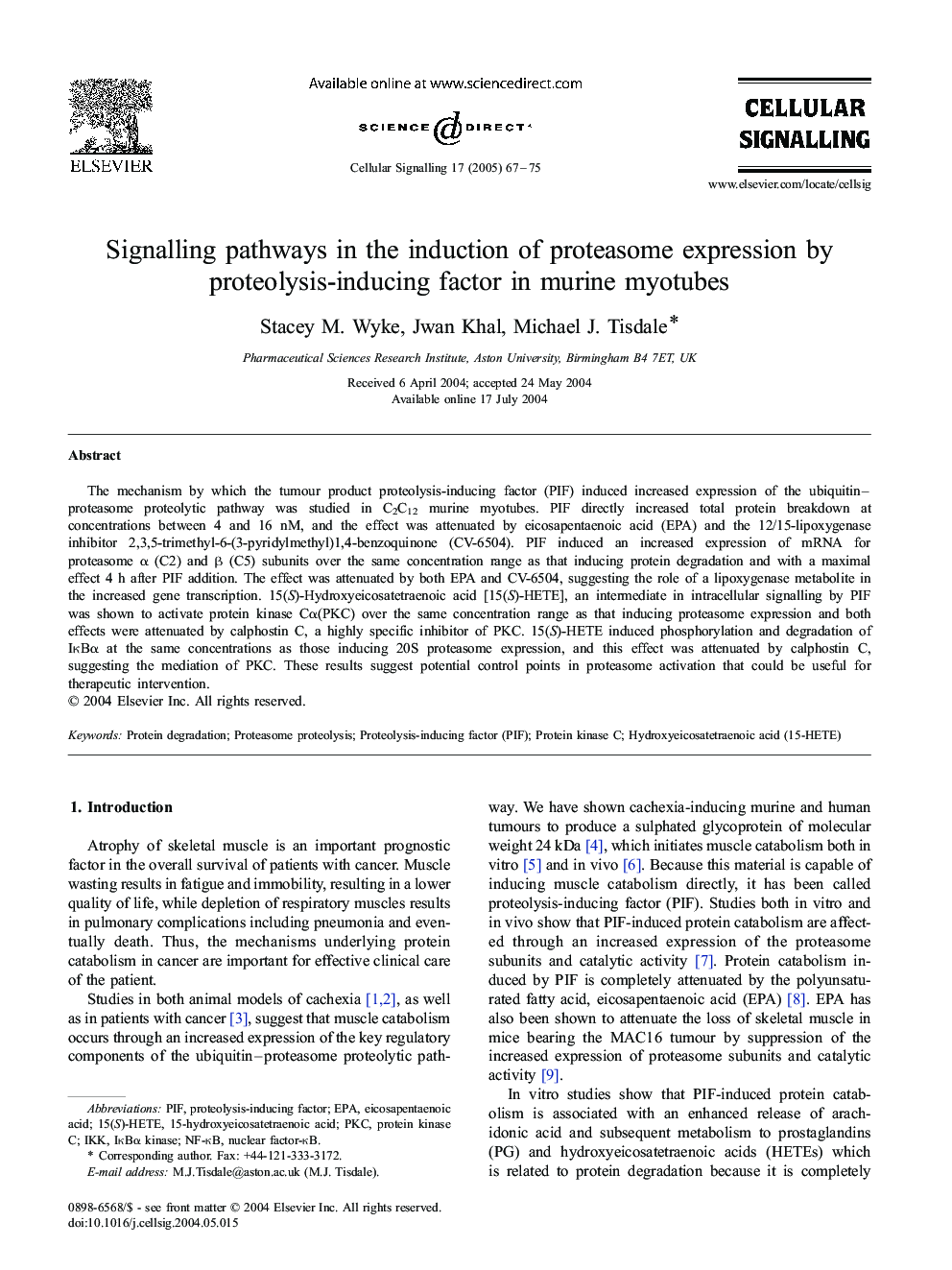| Article ID | Journal | Published Year | Pages | File Type |
|---|---|---|---|---|
| 10816549 | Cellular Signalling | 2005 | 9 Pages |
Abstract
The mechanism by which the tumour product proteolysis-inducing factor (PIF) induced increased expression of the ubiquitin-proteasome proteolytic pathway was studied in C2C12 murine myotubes. PIF directly increased total protein breakdown at concentrations between 4 and 16 nM, and the effect was attenuated by eicosapentaenoic acid (EPA) and the 12/15-lipoxygenase inhibitor 2,3,5-trimethyl-6-(3-pyridylmethyl)1,4-benzoquinone (CV-6504). PIF induced an increased expression of mRNA for proteasome α (C2) and β (C5) subunits over the same concentration range as that inducing protein degradation and with a maximal effect 4 h after PIF addition. The effect was attenuated by both EPA and CV-6504, suggesting the role of a lipoxygenase metabolite in the increased gene transcription. 15(S)-Hydroxyeicosatetraenoic acid [15(S)-HETE], an intermediate in intracellular signalling by PIF was shown to activate protein kinase Cα(PKC) over the same concentration range as that inducing proteasome expression and both effects were attenuated by calphostin C, a highly specific inhibitor of PKC. 15(S)-HETE induced phosphorylation and degradation of IκBα at the same concentrations as those inducing 20S proteasome expression, and this effect was attenuated by calphostin C, suggesting the mediation of PKC. These results suggest potential control points in proteasome activation that could be useful for therapeutic intervention.
Keywords
Related Topics
Life Sciences
Biochemistry, Genetics and Molecular Biology
Biochemistry
Authors
Stacey M. Wyke, Jwan Khal, Michael J. Tisdale,
